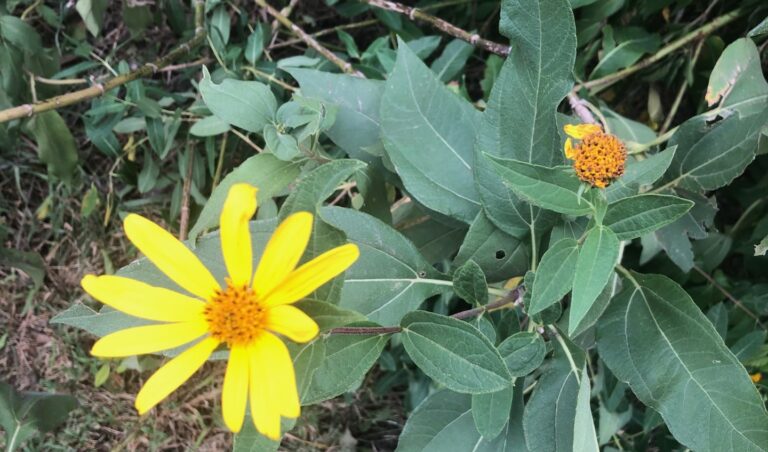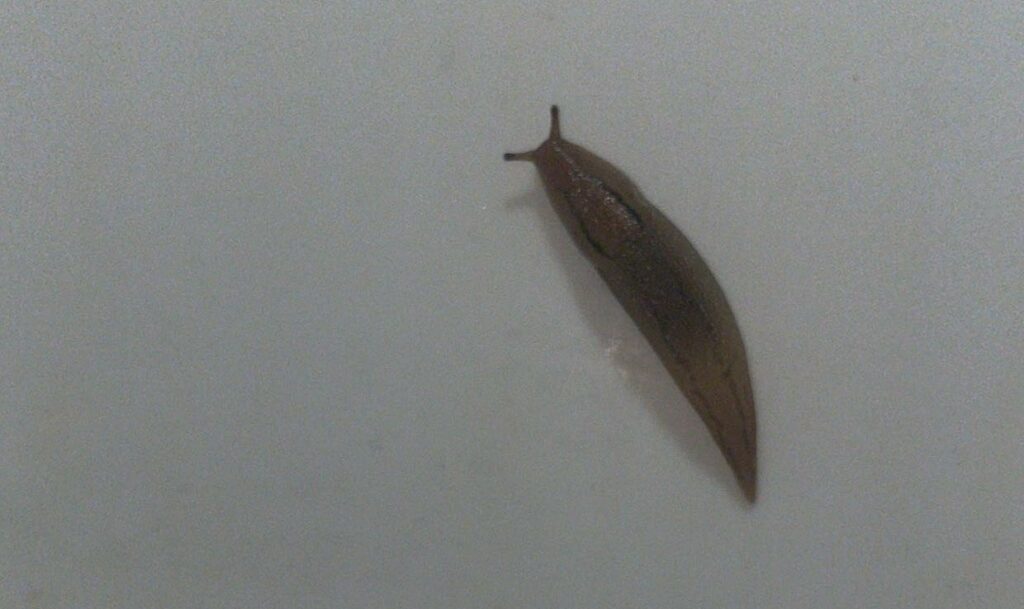Introductions
I recently had the unfortunate luck of losing 8-12 brassica (kale, collard greens, broccoli, and cabbage) seedlings. I remember planting my tender seedlings that I had grown from seed one evening after work and returning the next day to discover that my seedlings had been nibbled to the ground. I initially thought that the local rabbits or birds were eating my seedlings so I ended up covering the area with bird netting and set up a perimeter around my growing area. I then thought that the issue would be resolved and foolishly put out some of the extra plants I had in my possession. These too fell victim to pests.
At this point, I was beginning to feel a bit defeated. I had no clue what could be eating my plants. I then decided to point the finger at pill bugs/woodlice or “rollie pollies” even though I hadn’t really seen them much on the plants. My garden was plentiful of them, so I made a YouTube search or two and decided to cut out the tops off of some large water bottles with the intent to put over the remaining seedlings and to prevent any potential swarm of rollie pollies from killing my plants. As you may have guessed, this method also failed. I will say that it did give me a day or so grace period from the mayhem, but in the end more of my plants were demolished. I am now left with a small fraction of the plants I started with, but while checking on them in an early morning on my day off, I did notice a new pest which I hadn’t seen any other day, a slug.
In the past slugs hadn’t really been an issue for me. I had a slug here or there whenever I would grow head lettuce closely together, but it really wasn’t an issue overall. I would just wash my lettuce and the slugs would fall off. I always thought that the main cause of the slugs was over crowding of plants and an excess of moisture/shade within the garden, which did seem to be true. It wasn’t until this year that I learned that it isn’t always the case.
With slugs it seems that there isn’t always a “one size fits all” approach to managing the pest. Everyone tends to have a different preference on managing given their environment and options at hand. Some remedies can be very cheap and simple, while others can be more costly or labor intensive. I hope to transfer some of what I have learned while struggling with this obstacle over the past few weeks. Below I will list more information about slugs, my philosophy on how to best deal with the best, and other options that are available to you.
1. Understanding a Slug
Before you can target and reduce or eliminate the damage from slugs you need to understand what a slug is and how they live. It may seem obvious, but slugs are an invertebrate gastropod, related to snails. Slugs are hermaphroditic (having both sex organs) and a great deal of eggs after reproducing. Slugs are composed mostly of water and rely on their foot to get around. To keep their soft body safe they utilize the production of mucus to create a “slime coat” which helps protect the organisms from physical/mechanical threats as well as predation. The slime aids in transportation by creating a more sticky or adhesive barrier between the surface and the slugs foot.
Slugs play an important role in the ecosystem as many are the “cleanup crews” which help break down various decaying objects, mushrooms, and some living plants as we all know. There are certain snails which are carnivorous, which is a fascinating concept to know. Slugs are utilized as a food source for many other animals and should be considered a valuable organism to have within an ecosystem.
2. Pest Control Ethics
Despite my expressed anger towards slugs in the introduction, I do have compassion for the animals. I understand that they do play a role in the ecosystem and often do more good than harm around me. The past few years I had relatively little issues with slugs, and seem to only have an issue this year. Because of the immense benefit of biodiversity in an ecosystem/environment I try to not annihilate the slugs from existence in my garden, but merely deter or reduce their damage on my young plants.
I believe that many of the issues faced by gardeners are actually due to a design/management issue which is caused by manipulating nature to work outside its normal conditions. Much of these issues can have simple solutions and should be given great consideration before jumping to any quick or easy box store chemical concoction. Do know that pesticides (both organic and conventional) can impact other species outside of the one you are targeting. For me, it is not worth the loss of biodiversity/life to use them unless I am desperate for an outcome/yield.
3. Better Design
The first solution one should look to before jumping in the car and driving to a hardware store for some pesticides is to revisit your garden design and compare it to a natural setting. In the wild it is unlikely to see one type of plant grown in abundance throughout an entire environment with no competition from other plant species. In ecology it is known that the greater the population density of organisms in an area the greater the risk of disease/pests. This is why conventional farmers rely on the use of pesticides to ensure a more “pest free” yield.
As I mentioned previously, if you are planting too close together you may be creating great environments for slugs to hide in throughout the day. If you are like me and like to use a lot of mulch for better water retention and organic matter then do understand the risk and be sure to reduce some of the mulch around plants if you are having an issue with slugs.
4. More Biodiversity

The irony revolving around pest managing within a gardening/landscape design is usually an absence of biodiversity. I know what you are thinking right know, “No, I have too much biodiversity, which is why I am having issues with pests”, this is not true. In nature everything has or had a natural check and balance. If one species got too aggressive it usually would become humbled in some way shape or form via a natural phenomenon or another organism.
In the case of slugs one could consider using fragrant like marigolds or something of that nature. If you attract other insects there is usually a predatory insect that will eat slugs. The increase in insects around a growing space will usually increase the amount of bird traffic in an area which also helps reduce slugs within your garden. As you can see everything is connected and there is usually a simple solution to many of the common issues. Where things get tricky is in the case of invasive species as there are usually little to no natural “checks and balances”. In this case, you, the gardener must be the predator. In the case of slugs, there should be little to no issue with managing their presence.
5. Dry Materials
I speculate that a lack of biodiversity and poor garden design in previous years has done something in regards to increasing the slug population within my soil or compost, thus causing the main issues this spring, though I have little means to actually prove this. The method I personally liked best in regards to dealing with slugs was using a fine, dry, silica based substrate such as sand or diatomaceous earth to mulch around my plants about 3-6 inches in diameter. I try to mulch about half an inch deep with the dry material as well.
This method made the most sense to me as the slugs will avoid crawling over dry surfaces as to prevent drying out their foot and will avoid the plant. Sand/diatomaceous earth is still fairly water permeable and allows for water to reach your plant. So far I have had great success using this method and plant to slowly begin reintroducing some of my early brassicas.
6. Store Bought Options
If you aren’t so keen about buying sand to put in your garden and just want a quick way to remove slugs from your yard or garden do consider looking into the product, Sluggo, an organic slug/snail pesticide composed of an iron phosphate solution. As I mentioned in the ethics segment of this article, the use of organic pesticides does still have a negative impact on other insects/organisms. In the case of Sluggo, it seems that there is a possible correlation with a negative impact on earthworms.
Regardless, the use of pesticides for slug/snail management works on a short term scale, but does not really address the true cause of the problem(s). Use at your own risk for your own desired yield/outcome, but I would urge you to think about long term solutions after the initial issue is mitigated.
7. Other Options
If you are feeling ambitions and have a lot of time on your hands you can go hand pick slugs off of plants in the early morning or late at night and dispose of them in your preferred method. Another option is to use a fruit rind to bait in slugs and then to remove the rinds as to temporarily reduce the population in a localized area. Other people claim that the use of a copper tape or mesh can help shock or prevent snails/slugs from traveling past a certain area seems to work for other, but seems a bid hit or miss based on my research. Do look into it if interested.
Conclusion
Slugs have been wreaking havoc on my brassicas. I have never had to deal with these pests before in a way in which I have to deal with them this year. I am glad I was forced to learn more about the subject sooner rather than later so that I may now react sooner at the initial signs and save more of my plants in the future. I hope I gave you some useful information! Please feel free to reach out and let me know what methods work well for you when reducing slug damage in your garden.
